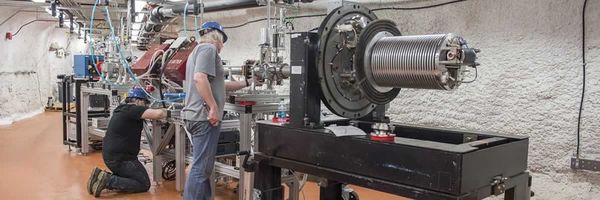
CASPAR Accelerator
CASPAR (Compact Accelerator System for Performing Astrophysical Research)
CASPAR is an experimental system centered on the use of a 1 MV electrostatic accelerator, located 4850 ft below the surface, at the Sanford Underground Research Facility (SURF) in Lead, South Dakota. A full laboratory and low-energy accelerator system has been constructed and commissioned by NSL faculty. CASPAR is a collaboration between the University of Notre Dame and South Dakota School of Mines and Technology. The goal is to measure reactions of interest in the stellar burning regime utilizing the 4300 m.w.e shielding provided by the deep underground environment. The system is well suited to a variety of reactions of interest for nuclear astrophysics, with a distinct focus (α,n) and (α,γ) measurements.
At the intersection of observational astronomy, astrophysics and nuclear physics, there stands the field of experimental low-energy nuclear astrophysics. Through the understanding of stellar burning processes, their energetics and mechanisms, we strive to build a picture of the chemical evolution of our Universe. The use of low-energy accelerator systems in the evaluation of stellar burning processes is a well-established technique, with many years of successful discoveries. The driving force is to push these measurements down into the stellar burning regime of astrophysical interest at lower energies. The natural tendency of these cross-sections (probability of reaction) at low energies is to drop off exponentially, making the detection of such events an extremely rare occurrence. The ever present abundance of cosmic-ray induced background inhibits such measurements by traditional means, swamping out the rarer events of interest sometimes by orders of magnitude.
Follow the link for more information on the CASPAR Website.